1961 – 2003
Also known as Mardi Gras, Star of Texas, Lucky Star and Apollon
The great merchant fleets suffered heavy losses during World War II. In the six years of the conflict, mines, torpedoes and bombs had destroyed thousands of ships. The largest allied loss during the war was the sinking of Canadian Pacific’s 42,348-ton Empress of Britain in 1940, while she was serving as a troop transport.
Following the Armistice in 1945, the shipping lines could start looking into the task of rebuilding their fleets. But it wasn’t that easy. The war had brought on a shortage of raw material, not to mention labour. It would take time and great efforts to heal the economy of the badly crippled Europe. But through the aid of the Marshall-plan, European finances had nearly recuperated by the mid-1950s, and things were finally looking brighter again.
The Canadian Pacific Railway Co. was one of the shipping lines that now set out to refresh their fleet with new ships. In 1956, their new Empress of Britain entered service on the Canadian run – she was the company’s first newbuild since 1931! The following year, in 1957, she was followed by a sister ship – the Empress of England. With these two 25,000-tonners, Canadian Pacific had a splendid pair of ships operating on the Liverpool-Quebec-Montreal route.
The success of the two new Empresses opted for a third ship of similar size and style to be built. Ordered from the shipbuilding firm of Vickers-Armstrong of Newcastle, yard no. 171 was launched on May 10th, 1960. Mrs. Diefenbaker, the wife of Canada’s Prime Minister, had been selected to christen the new liner. The name chosen was Empress of Canada. It was the third time in the company’s history that a ship was given that name.
When the ship had been fitted out, she was soon ready to enter service for her owners. On March 7th 1961, she set out on her sea trials. She performed satisfactory, and was handed over to Canadian Pacific on March 29th. A little less than a month later, on April 24th 1961, the Empress of Canada set out on her maiden voyage from Liverpool to Montreal, thereby joining her slightly older running mates Empress of Britain and Empress of England on the Canadian run.
The Empress of Canada’s stylish looks and amenities quickly earned her a very good reputation among the travelling public. As her two running mates, she was a very modern ship and was fitted with stabilisers and complete air-conditioning. Being the newest ship though, she was distinguished by her bulbous bow and more streamlined superstructure. For the greater part of the year, she and her consorts served on the Liverpool-Montreal run, using the 1,000-mile route along the St. Lawrence River to reach her turnaround port. With the St. Lawrence being a hazardous waterway, the new Empresses were able to answer the helm at only five knots. During the winters, the ships either terminated their sailings at Saint John, or sent off on Caribbean cruises out of New York.
But the world was rapidly changing, and there was exception for the ocean liners of the world. Ever since the Second World War, military advances in flight had been adopted for commercial purposes and by now the aeroplane was rapidly changing the concept of travel. Passengers could now cross the Atlantic on a plane with a speed of 500 knots, instead of sailing across at less than a tenth of that speed. Although many were reluctant to travel by air at first and stayed with the comforts and safety of ships, the aeroplane had soon gained a great popularity. As a consequence, the shipping companies would have to find new duties for their ships.
During the 1960s, the passenger shipping across the North Atlantic was steadily losing clientele to the air traffic. The Empresses were spending more and more time doing cruises instead of crossings, and the situation was not improved when the Boeing 707 was introduced in 1964. Canadian Pacific announced that they would reduce their involvement in the North Atlantic competition, and the Empress of Britain was sold late that year to become the Greek Queen Anna Maria.
Canadian Pacific was a going through many changes, and this was reflected in 1968 when they adopted new company colours. The deep-sea fleet was given green funnels with a white semi-circle, with an in-cut dark green triangle. The pattern was meant to represent the letter ‘C’. The new colour scheme was not well received by the public – traditionalists said it was ‘too modern’ – but it soon became recognised as a very fine livery.
In 1970, the Empress of Canada became the last Canadian Pacific ocean liner in service, when the Empress of England was sold to Shaw, Savill & Albion and renamed Ocean Monarch. Being the sole liner of the company, Empress of Canada only did 13 summer crossings per year – the rest of the time she spent cruising. But Canadian Pacific could not retain its business much longer, and on November 23rd 1971 the Empress of Canada arrived at Liverpool at the end of her last voyage for the company. With that, the North Atlantic service of Canadian Pacific ceased after 68 years. The Empress of Canada was put up for sale.
Fortunately, there were still people who saw great potential in the Empress. In January 1972 she was sold to Ted Arison’s newly founded Carnival Cruise Lines Inc. to become their first ship. Renamed Mardi Gras, the ship was refitted for her new purposes. Externally, she retained her beautiful profile, with the exception of the removal of some of her cargo cranes – those would not be needed in her new role as a full-time cruise ship. Her funnel was repainted, but it still kept much of its looks. Carnival decided to create their funnel livery with the old Canadian Pacific pattern as a base. The funnel was painted red, but the white semi-circle was kept on. The in-cut triangle was replaced with a blue in-cut semi-circle, thereby keeping – but slightly altering – the ‘letter C’-look.
However, the ship did not have a very auspicious start with her new owners. On her maiden voyage, she ran aground. Although she managed to come off undamaged, there was still trouble ahead. During the first one and a half years, Carnival recorded a loss of about $8,000,000. The Mardi Gras had been marketed as “The Flagship of the Golden Fleet”. Critics meant that it was not at all golden, and that there was no fleet – Mardi Gras was an only ship.
But the tide was about to change. In 1973, Carnival progressively introduced the ‘Fun Ship’ concept. $10,000,000 was spent over eighteen months on converting the Mardi Gras. But, in order to keep business rolling, the ship was kept in service while the work was being done. During the voyages, those areas that were being rebuilt were closed off to the passengers, and this resulted in the ship being able to carry only 60% of her usual capacity.
Internally, the ship went through a complete facelift. She was given vivid colours and bright lights, and several discos and casinos were added. Carnival now offered some of the cheapest cruises available in the Caribbean, and the indicators were soon pointing upwards. In 1974, the Mardi Gras was being marketed nation-wide in the US and Canada, and she was quickly becoming a very popular ship, often sailing with a full complement of passengers. By the mid-1970s, Carnival was enjoying immense success, and they were soon looking for a second ship to expand their fleet. In December of 1975, Carnival purchased the Queen Anna Maria (ex-Empress of Britain) and renamed her Carnivale. Through this quirk of fate, the two former Empresses were again serving the same company. The duo was transformed into a trio in 1977, when the S.A. Vaal – originally Union-Castle’s Transvaal Castle – was bought and restyled as the Festivale.
With this original trio of ships, Carnival now had its ‘Golden Fleet’. The company was making big money, and they soon announced the construction of their very first newbuild – the Tropicale. She entered service in 1982, and was followed by three successive ships – the Holiday in 1985, the Jubilee in 1986 and the Celebration in 1987. Carnival’s fleet, as well as its might, was growing at a steady pace. But the three original ships were still a very important part of the fleet, and they were thus kept at very high standards. In the 1980s, Mardi Gras went through two overhauls during which the ship was modernised and had more cabins added. The company had soon gained the well-earned reputation of always keeping their ships spotless.
But, as the cruise marked continued to grow, so did Carnival Cruise Lines. In 1990, the new 70,000-ton Fantasy entered service. Carnival had by now established themselves as the largest cruising company in the world, and their financial situation now gave them the opportunity to seriously upgrade their fleet. Astonishingly, the Fantasy would become the first ship of a total eight to be built from the same basic design. These state-of-the art cruise ships made the original trio Mardi Gras, Carnivale and Festivale obsolete, and it was clear that they would soon leave the company.
In the fall of 1993, the Mardi Gras was transferred to the Greek operator Epirotiki Lines, after a proposed merger between Carnival and Epirotiki had failed to materialise. However, the future duties for the Mardi Gras were unclear. It was proposed that she was to be renamed Olympic, but as Epirotiki was already operating another ship with that name, some suggested that she should be given the name Homeric instead. As it was, neither of these names was used. Instead, the ship was soon chartered to Galveston-based Gold Star Cruises. With this company, she was renamed Star of Texas and was employed doing short gambling cruises in the Mexican Gulf. But the venture was unsuccessful, and the company folded within a matter of months. The ship was then re-deployed to Miami, and continued doing gambling cruises, although marketed as Lucky Star. But the bad luck continued and also this stint became a very short one, lasting only a few weeks.
Escaping creditors, the ship first fled to Freeport and was then sent to Eleusis to be laid up in Greek waters. What now awaited her were a few years in uncertain limbo. The ship was still under Epirotiki ownership, but they did not see much interest in operating her. Then, late in 1995, Epirotiki merged with Sun Lines to form the new company Royal Olympic Cruises. However, the former Empress remained laid up, and was soon very run down. Rumours at the time said that the ship would re-enter service as either Homeric or Olympic 2004, but any such plans fell through. During the lay-up, her name was instead changed to Apollon.
But, in late 1997, things started to look a lot brighter. Apollon was moved to Piraeus to be refurbished in order to meet the latest SOLAS (Safety of Life at Sea) requirements. Much of her original traditional British fittings, such as rich wood panelling and brass, were still intact and Royal Olympic were careful not to spoil this atmosphere when they refurbished the ship. When Apollon returned to service, she was chartered to the company Direct Cruises, based in the United Kingdom, for the 1999 season. Here she was employed doing UK cruises, and with that she now returned to her native waters almost 40 years after her birth. This meant a welcome reunion for many British ship enthusiasts, however it would not last very long. Although Direct Cruises was doing very well on the British Market at the time, the company was soon acquired by the financially stronger competitor Airtours. They initially announced that Direct Cruises would continue operating separately, but this never happened and the charter of Apollon that was to have included the 2000 season was cancelled and the ship went back to her owners.
Royal Olympic still did not have any interest in operating the Apollon within their own fleet, and she was therefore sent back to Piraeus to be laid up again. Surprisingly though, Royal Olympic Cruises’ catalogue for the 2001 season included the Apollon, as she was employed doing short 3-4 day cruises out of Piraeus from March through November, due to delays in the delivery of the Olympic Explorer. She operated in tandem with the Olympic Countess for a while, but was ultimately sold for scrap in 2003. With that ended a long and distinguished career in maritime history.
Specifications
- 650 feet (198.6 m) long
- 86.6 feet (26.5 m) wide
- 27,284 gross tons
- Parsons geared turbines turning two propellers
- 20 knot service speed
- Passenger capacity of 1,048 people as originally built, increased to 1,240 when refitted for Carnival

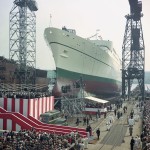
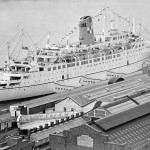
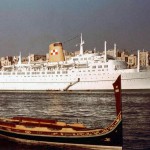
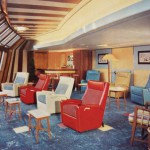
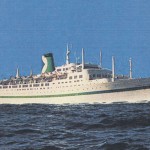
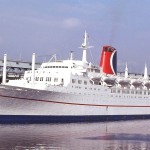
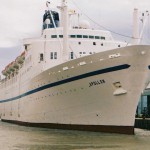
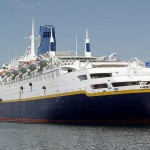
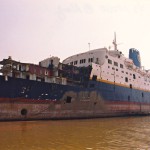
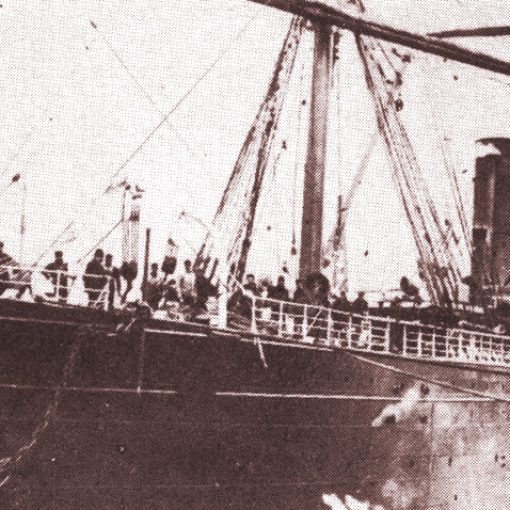
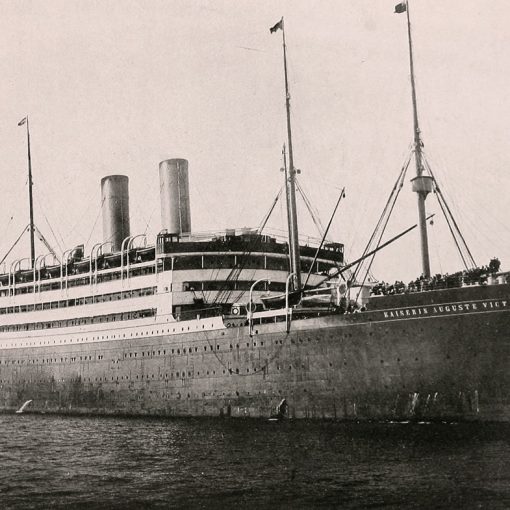
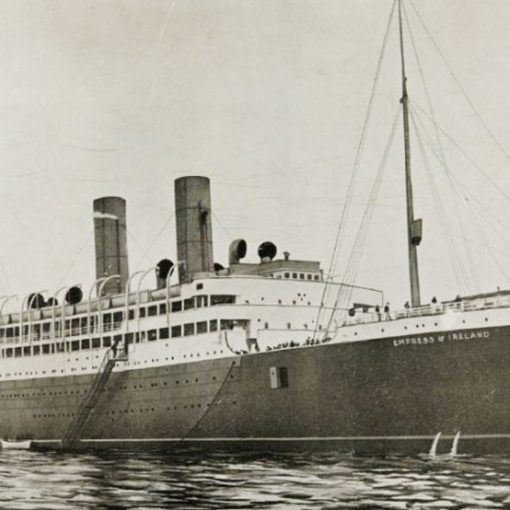
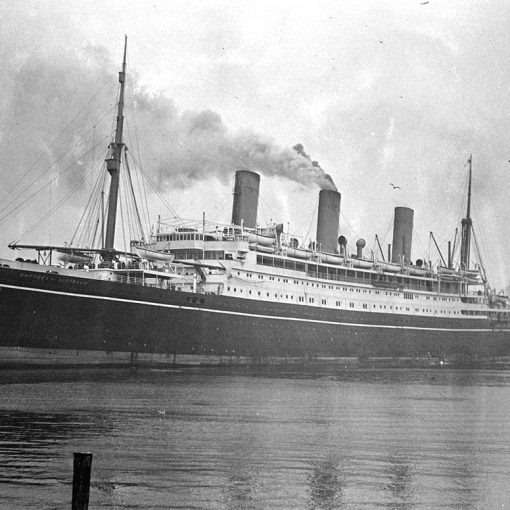
7 thoughts on “Empress of Canada (III)”
I was on that ship in November 1964. I was 10. Would love to connect with anyone else that was on the journey at that time.
I was on the Empress of Canada in 1964 from Southampton to Montreal when I was eighteen months old. I also worked on her as a casino dealer in 1995 out of Galveston as she was known then as the Star of Texas and then in Miami as the Lucky Star.
Immigrated to Canada in 1970, travelled on this ship from England. It was wonderful to read the history. Thank you to whoever it was that took the time to put this article together.
Our first day on the ship was April 23, 1970…found the article on the same day 50 years later.
How wonderful that my article helped to connect you to your past, Jacquie. It’s always nice to hear from people who have personal connections to the ships on our website, and what a lovely coincidence that you found the article 50 years to the day after beginning your voyage!
I would like to know If is possible to get the
Passenger list for 1962—1963 from the
Empress of Canada please
has anybody got a photo of the STAR OF TEXAS or a photo of the LUCKY STAR